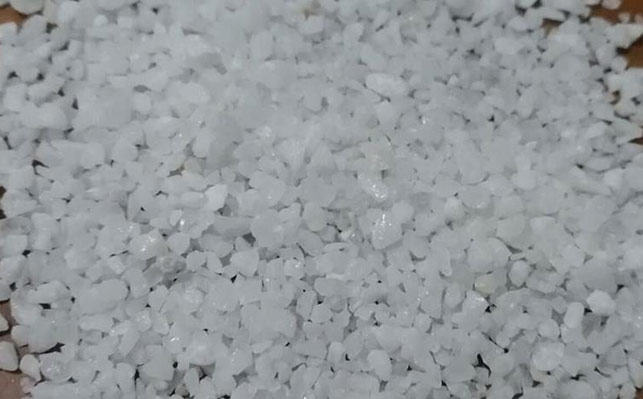The high aluminum content in quartz sand can have various effects on its properties and applications. Below, we will discuss the influence of aluminum on the quality of quartz sand and the methods used to remove aluminum from quartz sand.

1. Decreased Sintering Performance: Quartz sand with high aluminum content tends to exhibit reduced sintering performance. The presence of aluminum in the silica structure leads to substitution reactions during the sintering process, resulting in lower strength and reduced density of the sintered quartz. This may affect its applications in refractory materials and related industries.
2. Increased Melting Point: The melting point of quartz sand is raised when the aluminum content is high. The increased stability of the silicate structure, caused by the presence of aluminum, requires higher temperatures for melting. This may pose challenges in industries such as glass manufacturing and ceramics production, which require high-temperature processing.
3. Higher Coefficient of Thermal Expansion: Quartz sand with high aluminum content may exhibit a larger coefficient of thermal expansion. The presence of aluminum alters the lattice structure of quartz, leading to a higher coefficient of thermal expansion. This may impact the stability and performance of quartz sand in high-temperature environments.
4. Reduced Electrical Insulation Properties: High aluminum content in quartz sand can negatively affect its electrical insulation properties. The increased impurity content due to aluminum presence may lead to reduced electrical insulation performance, potentially impacting the use of quartz sand in electronic components and electrical insulation applications.
It is important to note that the influence of aluminum content in quartz sand may vary depending on the specific application requirements and the extent of aluminum presence. Selecting the appropriate quartz sand or optimizing the processing to reduce high aluminum content is crucial to meet desired performance and quality requirements.
1. Magnetic Separation: Aluminum in quartz sand is usually present in the form of aluminum silicate. Magnetic separation devices, such as magnetic separators, can be utilized to selectively separate magnetic aluminum silicate minerals from quartz sand, effectively reducing the aluminum content.
2. Gravity Separation: Gravity separation processes exploit the density difference between quartz sand and aluminum minerals for separation. Various gravity separation devices, such as heavy media separators and centrifuges, can be employed to separate aluminum minerals from quartz sand, thereby reducing the aluminum content.
3. Acid Washing: Acid washing is a common method used to remove aluminum minerals from quartz sand. Acid washing agents like hydrochloric acid or sulfuric acid are used to dissolve aluminum minerals selectively. It is crucial to control the acid concentration and treatment time carefully to prevent damage to the quartz sand itself during acid washing.
4. Fine Grinding: Through further fine grinding, some of the aluminum-bearing mineral particles in quartz sand can be crushed, making it easier for them to detach from the quartz. Utilizing suitable grinding equipment, such as ball mills, for fine grinding can effectively reduce the aluminum content in quartz sand.
The appropriate treatment method should be selected based on specific circumstances, including the nature of the quartz sand, the extent of aluminum content, and the requirements of the final product. In practical operations, laboratory testing and process optimization may be required to determine the most suitable treatment approach for reducing aluminum content in quartz sand.